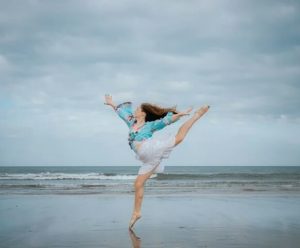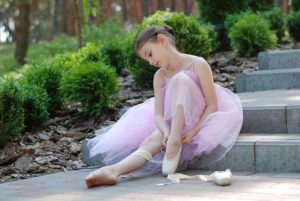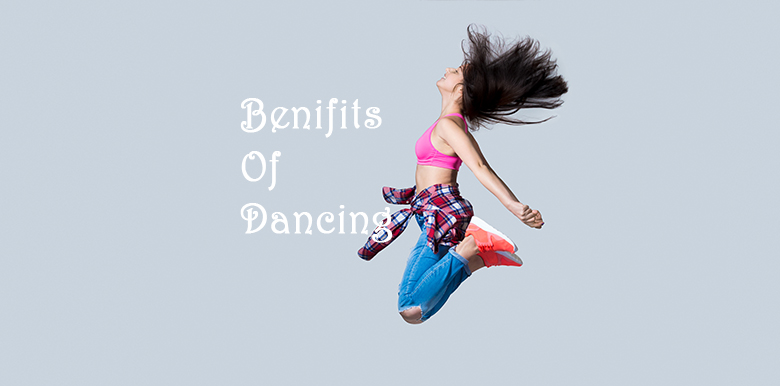Dance is a performing art. It is described in many ways. It is when people move to a musical rhythm. They may be alone, or in a group. The dance may be an informal play, a part of a ritual, or a part of a professional performance. There are many kinds of dances, and every human society has its own dances. Dancing is sometimes done as sport, and has similar athletic aspects.
History of Dance –
Every society has its own dances. There are pictures, on pottery and stone, which show dances from several thousand years ago, in Egypt and Greece.
In more recent times, the first dance school we know about was opened in 1661 in Paris. Only men were accepted until 1681. After 1681, women were accepted too. Ballroom dances are forms of modern dance. Ballroom dances such as the waltz are done by couples.
Until the 20th century, most ballroom dances were sequence dances. The way people moved was planned in set formation. These formations were usually lines or squares. Everyone moved at the same time, and finished at the same time. The music played for a set time, and then stopped. After the invention of the waltz, around 1800, another style of dancing developed. In the waltz, and later dances, people danced in couples, but they did so separately. They did not dance in formation, but moved round the room as they pleased (but anti-clockwise). Often, new dance styles arrive. Some dance as individuals, separately, as they please. Street dance is like that. All these types of dance have music.
Benefits of dancing –

Dance
Dancing can be a way to stay fit for people of all ages, shapes and sizes. It has a wide range of physical and mental benefits including:
– improved condition of your heart and lungs
– increased muscular strength, endurance and motor fitness
– increased aerobic fitness
– improved muscle tone and strength
– weight management
– stronger bones and reduced risk of osteoporosis
– better coordination, agility and flexibility
– improved balance and spatial awareness
– increased physical confidence
– improved mental functioning
– improved general and psychological wellbeing
– greater self-confidence and self-esteem
– better social skills.
Types of dance –

Ballet
There are many styles of dance to choose from, each with its own attractions. Popular styles of dancing include:
Ballet – mostly performed to classical music, this dance style focuses on strength, technique and flexibility.
Ballroom dancing – this involves a number of partner-dancing styles such as the waltz, swing, foxtrot, rumba and tango.
Belly dancing – originating in the Middle East, this dance style is a fun way to exercise.
Hip-hop – performed mostly to hip-hop music, this urban dance style can involve breaking, popping, locking and free styling.
Jazz – a high-energy dance style involving kicks, leaps and turns to the beat of the music.
Pole dancing – has become increasingly popular as a form of exercise. It involves sensual dancing with a vertical pole, and requires muscle endurance, coordination, and upper- and lower-body strength.
Salsa – involving a mixture of Caribbean, Latin American and African influences, salsa is usually a partner dance and emphasises rhythms and sensuality.
Square-dancing – a type of folk dancing where four couples dance in a square pattern, moving around each other and changing partners.
Tap dancing – focuses on timing and beats. The name originates from the tapping sounds made when the small metal plates on the dancer’s shoes touch the ground
How to start dancing at home –
1. Choose dance videos to follow along to learn the moves and routines. Use a search engine or the YouTube search bar to find instructional videos for your chosen style of dance. Pick 1-2 videos that are designed for beginners and that seem easy to follow.
Try to stay away from the instructional videos that are geared towards more advanced dancers until you practice more and feel more confident in your ability.
If you don’t enjoy a particular video, simply try out a different one. You may look through a few videos before you find one that is a good fit.
You can also rent or purchase dance DVDs.
2. Mirror the movements of the instructor in the dance video. Face the dance instructor in the video and pretend that you are the mirror image of the instructor’s movements. Watch the instructor at all times and try to keep up with all of the steps.
3. Learn the dance steps and sequences in order. It’s likely that the video that you are watching will consist of a few different steps to learn. Practice each of these steps until you feel confident performing them. Then learn the sequence of the steps, paying attention to what step to start with and how to transition to the next one.
Once you have learned the steps, it may still take a bit of practice to learn the order.
Although the instructor may explain the steps and sequence verbally, it’s easiest to learn to dance visually by watching and then following along.
4. Keep to the rhythm of the music as you are learning. When learning how to dance, listening to the beat and the rhythm of the music can help you to remember the sequence of the steps. Concentrate on listening to the music and always dance to music rather than without while you are learning a new routine.
If you are struggling to hear the beat in the music, try tapping your foot, clapping your hands, or counting to 8 along with the rhythm.
5. Practice the dance moves and routines until you feel confident. Continue following along with instructional dance videos until you can dance without needing to watch the video. Then begin dancing without the guidance of the videos by playing the music and trying to remember the steps on your own. You can always go back and watch the dance videos if you need a quick reminder.
The more that you practice the dance steps and routine, the easier it will get to remember on your own over time.
6. Dance in front of a mirror to see how you can make improvements. Pick a space where there is enough room for you to move and place a large mirror in front of you. Practice your dance moves and routines in front of the mirror and look out for any parts that you think you could improve on. Then, practice adjusting your steps slowly and incorporating these into your dance.
Alternatively, you can video yourself dancing. Having a collection of videos of yourself dancing will also let you watch your progress over time.
7. Go dancing with your family or friends to have fun with your new moves. Once you feel confident in your dancing ability, it’s time to enjoy yourself and reap the rewards of all of your hours of practice! Invite your family or friends out to a dance class, party, bar, or club. Alternatively, you can invite them over to your home for an informal night of dancing and fun.
Now try dancing and practicing at home and be an expert at it. When you go out next time, you can show your friends how good you are at it!
